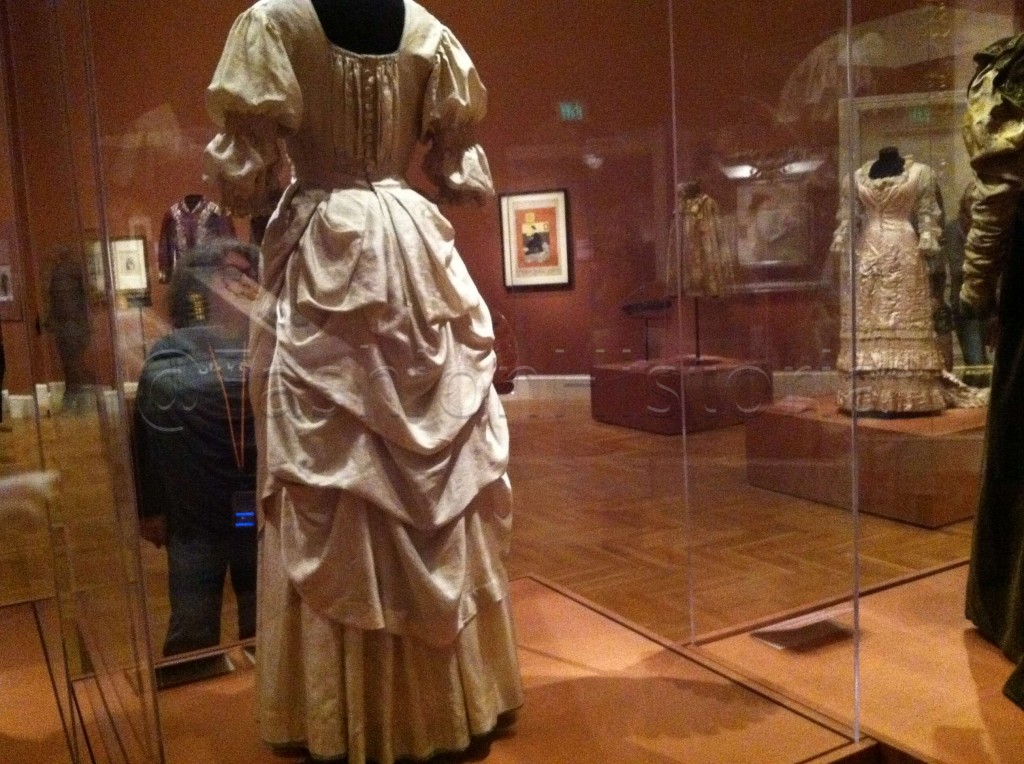Saturday, June 9, 11:00 AM – 4:00 PM
Choose from thousands of opera, theatre, dance, musical theatre and film-related items. These items are duplicate material from our library collection. Pay one admission for each time you pass through the Sale in the Main Gallery and take away as much as you can carry in one arm load. Individually priced items will be available for sale in the adjacent Reception Gallery. Proceeds benefit the preservation of MPD’s collections.
Members-Only Hour, 11:00 AM – 12:00 PM, $20 (Purchase Tickets)
General Public , 12:00 PM – 4:00 PM, $25 (Purchase Tickets)
Museum of Performance & Design, Veterans Bldg., 401 Van Ness Ave, Suite 402 San Francisco, CA 94102
415-255-4800
Schiaparelli and Prada: The book

While the Met’s big gala for Schiaparelli and Prada: Impossible Conversations has come and gone, the curatorial work and content of the show is the real treat for fashion historians, clothing and costume academics, and enthusiasts alike.
For the past two weeks I’ve been thumbing through the beautifully produced book that accompanies the exhibition. Curators Andrew Bolton and Harold Koda have paired with New Yorker writer Judith Thurman to provide some incredibly well-honed thinking on the two designers, explaining the process for the show; the structural construct behind it; and providing new analysis of the two vastly different and yet remarkably similar designers.
Schiaparelli and Prada was developed, in part, to take advantage of the recent addition of a significant number of Schiaparelli pieces acquired from the Brooklyn Museum’s collection. Curators and staff had long wanted to put together a ‘conversation’ exhibition between two designers, and modeled the show on Miguel Covarrubias’s “Impossible Interviews” fictional series done for Vanity Fair in the 1930s. The ‘book within a book’ design concept provides space for the two designers statements on similar subject matter to create what the curators deem (appropriately enough) “a faintly surreal conversational tone.”

Schiaparelli and Prada is divided into seven sections examining varying types of ‘chic,’ (hard, ugly, naif) and ‘the body’ (classic, exotic, surreal) explored by the two designers, as well as a section called ‘waist up/waist down.’ The premise reminds me of a comparative literature class I once took in undergrad that focused on William Faulkner and Toni Morrison where the final project was to enact a fictional debate between the two authors. The result was a deeper and more nuanced understanding – and the same results are achieved with Schiaparelli and Prada.
Through this we learn how dis-similar the two views are on fashion as art (Schiaparelli: Pro; Parda: Con); yet how similar their interests were/are in narrative prints, the artistic avant garde, tromp l’oil, as well as both good and bad taste (perhaps the ‘bad taste’ element inspired the Mark Jacobs fiasco). I’ve yet to finish it, but I’m intrigued but what I’ve encountered so far.
For more of the visual comparisons made by the book, I’ve included some sample page-spreads below:


My New Job at the San Jose Museum of Quilts and Textiles.
After years of plugging away at the academic study of dress and textiles, I am about to start a new position in my preferred field! My new job as the Marketing Director for the San Jose Museum of Quilts and Textiles begins tomorrow, and I’m so thrilled to be working in a museum, with textiles, and in the bay area!
For those who aren’t familiar, the San Jose Museum of Quilts and Textiles is a small museum with a big mission: to “promote the art, craft and history of quilts and textiles.” and they will celebrate their 35th Anniversary this year.

Haena Point (Hawaiian Sunset No. 1), By Mark Adams, Quilt, 1979 From the Collection of the Stanford Library of Art and Architecture It all began in 1977, when the Santa Clara Valley Quilt Association opened in a Los Altos storefront. Now in its permanent home in downtown San Jose, the collection houses “850 quilts, garments and ethnic textiles, and a research library of more than 500 books on the history and making of quilts and textiles.”
If you’ve never seen an art quilt on a museum wall, you are missing out – quilts are a flexible form, that can work as painting, sculpture or artifact. I’ve seen quilts as portraits, landscapes, using the same painterly techniques as pointillism or impressionism and the fashion techniques of bead and ribbon work to create evocative masterworks of art. The museum also frequently exhibits non-quilt textiles, including fashion, crochet and knitwear, and tech-textiles.
I can’t tell you just how excited I am about this opportunity. As I grow familiar with my new role, I’ll be sure to share exciting exhibitions, events, objects and opportunities with you.
Check out the Facebook page, and the list of upcoming exhibitions for a preview of what I’ll be working on – and if you happen to be down in the South Bay, be sure to pop by!
Herb Ritts: LA Style at the Getty
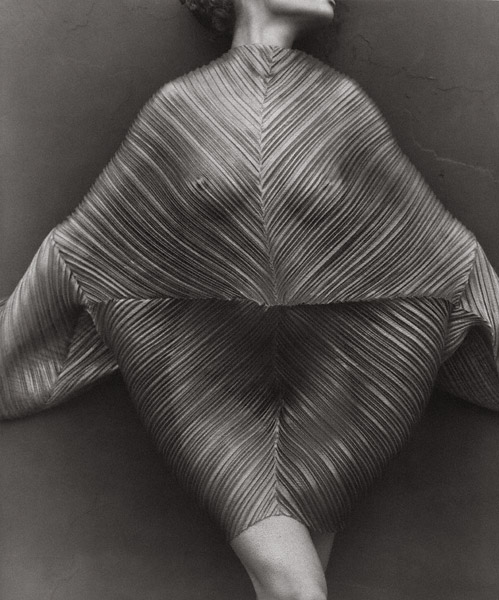
Following in the footsteps of other important fashion photographers such as George Hurrell, Horst P. Horst, Louise Dahl Wolfe, Irving Penn, and Richard Avedon, 1980s photographer Herb Ritts (1952–2002) is now the center of an exhibition titled Herb Ritts: LA Style, through August 26, 2012, at the Getty Center, West Pavillion in Los Angeles. Best known for his fashion photography, nudes and celebrity portraits in dazzling black and white his photographs seem to search for and elevate pure beauty.
The online component of the exhibition includes a brief overview, and of the above photograph, explains:
“To show off this dress by Issey Miyake, Ritts selected a dark backdrop and had model Karen Alexander adopt a ballet-like pose. Lighted from above, the semitranslucent fabric both reveals and obscures the contours of the model’s body. The photographer’s choice of the platinum printing process over the less expensive and more common gelatin silver process gives the photograph a significantly wider range of tones and a luxurious matte surface.”

Tomorrow evening, visual studies scholar Jonathan Katz will give a lecture titled “Aide/AIDS-mémoire: Herb Ritts and the Picture of Health.” His lecture will, in part, resituate “Ritts’s work in the social and cultural context of the worst years of the plague” and argue “that his commercial and critical import stem in large part from the fact that he was an openly gay photographer who nonetheless proffered a utopian dream…”
Lillian Bassman: Lingerie
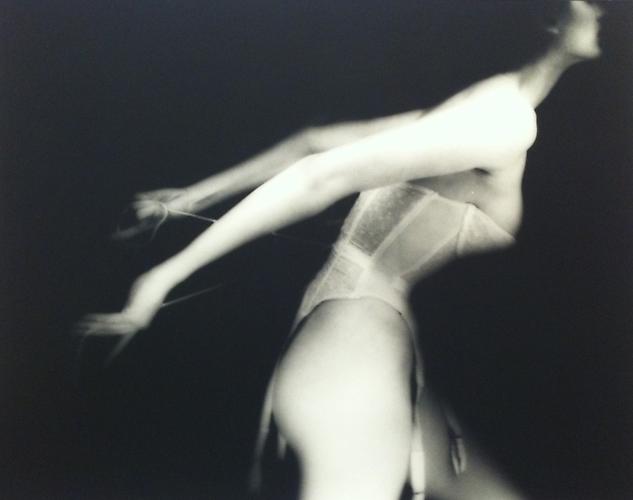

Lillian Bassman: Lingerie is a visually rich book of fashion photography, spanning sixty years of Bassman’s career (Bassman passed away just a few months ago in February 2012). If you want to understand anything about the way the fashionable silhouette has changed over those sixty years – a good start would be to look at the lingerie underneath.
The book includes eighty of Bassman’s black and white images, as well as an introductory essay by Eric Himmel, Vice President, Editor-in-Chief at Harry N. Abrams, Inc. He deftly places her in within the context of the fashion magazine world and greater historical events. He describes her working relationship with Alexy Brodovitch and Carmel Snow, art director and editor for Harper’s Bazaar – whom she began working with in 1948. Himmel’s introduction notes, “She was an inveterate observer of women and their ways.” and describes the role of lingerie photography in her career:
“Over time, the photography of women in lingerie became a part of Bassman’s regimen, akin to a painter’s weekly sessions with figure model and sketchbook. As the structured undergarments of the fifties gave way tot he more natural styles of the sixties, she captured a new freedom of movement in her models that replaced the languid sensuality of the earlier photographs. The jobs, both editorial and commercial, as well as sessions with friends to experiment, were occasions to represent the female figure, one of the oldest tasks in art, intimately familiar to Bassman from her days as an artist’s model. . . Each image has passed through many states on the way to its reproduction in this book, but none would be unpleasing to the thirty-one-year-old in her homemade bodice and skirt.”
Happily, the Peter Fetterman Gallery in Santa Monica is currently exhibiting Lillian Bassman: A Life through June 9 at and it includes her lingerie work as well as her other fashion photography. There’s also this marvelous video that Harper’s Bazaar put together – its insightful and reveals much about her career and process.
SFSU Thesis Exhibition: Screenprint, art about the body, etc.
 2012 Master of Fine Arts Thesis Exhibition at San Fransisco State University:
2012 Master of Fine Arts Thesis Exhibition at San Fransisco State University:
April 21, 2012 – May 11, 2012
“The 2012 Master of Fine Arts Thesis exhibition features the work of 9 artists: A. Gaul Culley, Dan Herrera, Nif Hodgson, Paula Moran, Kanako Namura, Billy Ocallaghan, Jordan Perkins-Lewis, Kim Snyder, and Matt Thompson.”
The opening reception will be on April 21st from 1-3pm and the exhibition will also be open during the University’s Commencement, on Saturday May 19.
In scrolling through some of the artists profiles I was struck often by Dan Herrera‘s work and his interest in the body. Of his series “Estan de una Herencia Extraña” he notes “This work centers around the idea of skin, and thinking about skin as a continuous surface in relationship to time and movement. . . . Working in this way, the elasticity of both time and skin can be stretched – revealing curious illustrations of movement.” But it was his series “The Alchemists” which I found both aesthetically pleasing as well as engaging intellectually. An artist statement related to these images was absent from his portfolio, but they almost don’t need one. Enjoy, and for more visit his website.


Costume Society Western Region on the Road!
Join CSA Members and guests this summer for a special private curator-led tour of Colors of the Oasis: Central Asian Ikats at the historic Seattle Asian Art Museum (SAAM) in Seattle, WA on June 14, 2012. The show originated from the Textile Museum in Washington D.C. – a premiere institution – and it’s a unique opportunity for West-coasters to see it without having to travel very far.
Registration forms are due by June 28 – and at the low $30 registration price, tickets are bound to go fast. Hope to see you there!
*Photo: Young Adult’s Robe, Central Asia, Uzbekistan, Bukhara, 1870s (?), silk warp, cotton weft; warpfaced plain weave, The Textile Museum, 2005.36.144, The Megali Collection, Photo by Renée Comet
Aesthetic Fashion and “The Cult of Beauty”

Sometimes, when walking through an exhibit an object will stop you dead in your tracks – it’s visual impact interrupting any previous thought you might have had. Such is the case with the 1885 Liberty & Co dress currently on display in the Legion of Honor as a part of their current exhibition, The Cult of Beauty: The Victorian Avant-Garde, 1860-1900 (on view through June 17, 2012).

Liberty & Co. Ltd., dress Striped washing silk lined with cotton, c. 1885, V & A This dress – in a gallery which houses all seven of the items of dress for the exhibit – is sculptural, simple and elegant. It’s a part of the Victoria & Albert’s permanent collection and the fabric is manipulated to resemble high art, to my mind references both painting and sculpture. The fabric seems to move like liquid and it’s no surprise to learn that the gown was designed by a sculptor (Sir Hamo Thornycroft) for his wife. Being a Liberty & Co. dress, the fabric is really the focal point and the artist has done a wonderful job of displaying this delicate, cotton-lined silk to it’s best advantage.
For more on their story, including letters between the two about this dress, see the V & A website here.
The rest of the show is equally impressive, and the exhibition catalog describes the styles utilized by the Aesthetic Movement (Japonism, Neo-Classisism, and Pre-Raphaelite), it provides insights on the artists, designers, makers and writers of the era – from William Morris to Liberty & Co, to Oscar Wilde, Whistler, Gowin and Bearsley. It includes painting, furniture, decorative arts (a fair number of tea pots, ceramics, a beautiful punched fireplace, even wall-paper and textile designs), illustrations, books and other works on paper as well as examples of fashion and adornment. It is, in fact, comprehensive.
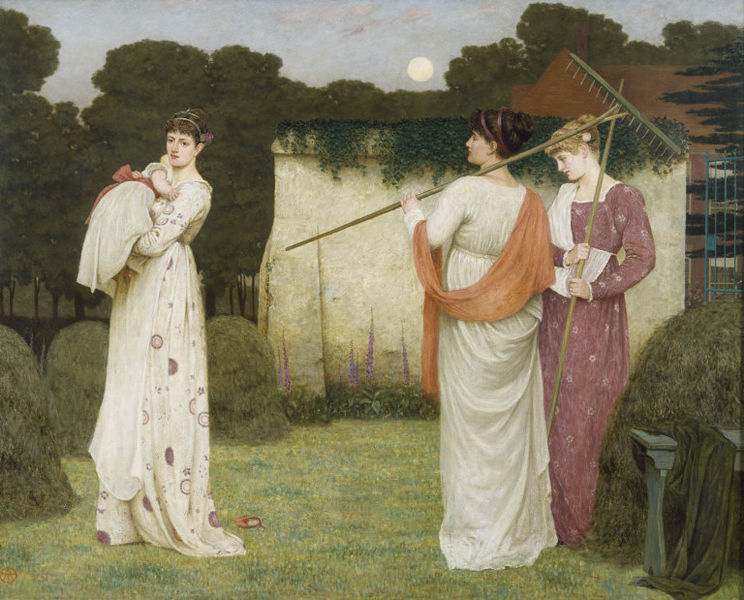
I fell in love with the dress on the left: Thomas Armstrong, "The Hay Field" Oil on Canvas, 1869, V & A. Though fashionable dress and textile designs are scattered through-out the catalog (and exhibition) – two small sections focus on dress and jewelry-placing them within the greater context of the artists and art-forms of the movement.

Click here to purchase the exhibition catalog. The first is an essay by Edwina Ehrman, Curator of Textiles and Fashion at the V & A, “Women’s Dress” and though short – it notes that the leaders of the Aesthetic movement (Edwin Godwin, William Morris, Walter Crane and Oscar Wilde) all argued in favor of “the beauty of the natural body and that a woman’s clothes should reflect her form and respect its physiology.”
She notes that “in the 1870s women wishing to dress artistically were recommended to look for inspiration in paintings, particularly those by the Pre-Raphaelite artists, and in books about period costume wher they would find attractive sleeve details and decorative combinations of colours and fabrics.”
If you can’t make it to see the exhibition in person in San Francisco, the catalog is highly illustrated and well-written – utilizing the V & A’s knowledgeable curators. I ended up both seeing the exhibit and getting the catalog – the lure of that one dress was too irresistible to pass up.
Gaultier at the de Young: Technology, Craft and Art of Fashion
The Fashion World of Jean Paul Gaultier: From the Sidewalk to the Catwalk exhibit at the de Young has been getting a fair amount of media attention since it opened to the public on March 24. Much of the coverage focuses on the technology used for the mannequins, and indeed when I first saw them I was mesmerized – to the point that I forgot to look at the garments on display in the first gallery. I began to get concerned that the distraction of the display techniques would overpower the rest of the show. But, by the end of the first gallery, I had thankfully re-engaged with the content.
The Museum has been organizing large scale events, as well as academic explorations of the exhibition through events including a conversational lecture between Suzy Menkes and the designer; as well as historical perspective by Kimberly Chrisman-Campbell. In Menkes introduction of Gaultier, she takes a moment to clarify that the ‘tricks’ and cleverness often used by designers (both exhibition designers and fashion designers) are not the real value of the exhibition. She points out that the value is really in Gaultier’s focus on “technique, skill and handwork.” She also made sure to draw attention to Gaultier’s ability to capture a moment in time.
Her comments are by no means insignificant, and when speaking on “technique, skill and handwork,”she points out that “if you search, you can find them” –perhaps implying that they weren’t as much of a focus as they should be. While I was certainly drawn in and amazed by the technology -ultimately it was his focus on craft and design (and yes, details) that ultimately kept me engaged.
The exhibit features over 200 utterly captivating objects that I’d put in the category of contemporary art – several of the speakers at the press preview felt that way too. Gaultier’s work is both ‘of the moment’ and contains historical reference and I frequently found myself identifying a particular moment in history: the Madonna cone bra being the obvious iconic element.
I also found historical references in a pair of men’s pants that reminded me of a Charles James ball gown; or the Red-beaded headdress in the shape of a schooner harkening Marie Antoinette; or a pair of women’s trousers with knife-pleates at the bottom which reminded me of some of Dior’s work from the 1950s. For those not able to see the show in person – there is a huge exhibition catalog (and Amazon is selling it at a discount: it’ll save you $50). For those of you who are able to see it (or who saw it in Montreal) – what’s your take on the mannequins?
Please enjoy the brief photo-tour
Top selling new Fashion History books
I was wandering around Amazon yesterday and discovered a handy list that tells you exactly which new or about-to-be-released books on fashion are already their top sellers. Not only does it indicate what’s about to be a hot topic, it also helps fashion book-horders like myself save money (pre-ordering through Amazon can save you as much as 40% off the regular price). Anyway – here are just a few of the current top sellers:
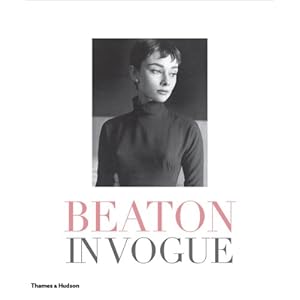 Beaton in Vogue By Josephine Ross
Beaton in Vogue By Josephine Ross
Available: April 1, 2012
Book description: “Cecil Beaton was a man of dazzling charm and style, and his talents were many. At the age of twenty he sent Vogue an out-of focus snap of a college play, and for the next half-century and more he kept readers of the magazine up to date on all the various activities of his career. Condé Nast, the owner of Vogue, convinced Beaton to abandon his pocket Kodak, and his resulting photographic work earned him a place among the great chroniclers of fashion. Witty and inventive, he also designed settings for plays and films—and for himself—and as a writer he was an eloquent champion of stylish living. This book includes articles, drawings, and photographs by Beaton dating from the 1920s to the 1970s. Beaton loved Vogue, and his contributions testify to the wit, imagination, and professionalism that he and the magazine always had in common.”
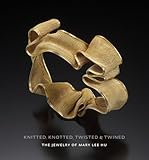 Knitted, Knotted, Twisted, and Twined: The Jewelry of Mary Lee Hu
Knitted, Knotted, Twisted, and Twined: The Jewelry of Mary Lee Hu
By Stefano Catalani, Jeannine Falino, and Janet Koplos
Available: March 1, 2012 (though Amazon seems to be out of stock)
Book description: “Over the past 40 years, Mary Lee Hu has affirmed her distinctive voice in the world of jewelry with her elegant, voluptuous creations. Using wire the way hand weavers use threads, Hu has blazed a trail as both artist and innovator, exploring the nexus between metalsmithing and textile techniques, often through the recovery of historical precedents from an ancient past, and inspired by her innate aspiration to perfection and her stubborn curiosity. Hu’s apparently effortless and graceful creations, resulting from twining, weaving, knotting, and braiding, investigate both the possibilities and limits of wire by melding fiber art and jewelry, structure and pattern, light and line. Knitted, Knotted, Twisted, and Twined features exquisite earrings, rings, brooches, and neckpieces drawn from public and private collections internationally. The book traces the evolution and refinement of Hu’s processes and skill from her earliest experimental pieces in the late 1960s–capturing the spirit of a time when craft and lifestyle were so passionately intertwined–to the confidence and movement of her contemporary creations.”
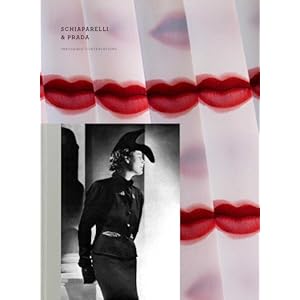 Schiaparelli and Prada: Impossible Conversations (Metropolitan Museum of Art)
Schiaparelli and Prada: Impossible Conversations (Metropolitan Museum of Art)
by Andrew Bolton and Harold Koda
Available: May 29, 2012
Book Description: “Although separated by time, Miuccia Prada and Elsa Schiaparelli—both Italian, both feminists—share striking affinities in terms of their design strategies and fashion manifestoes. Presented as an intimate “conversation,” Schiaparelli and Prada: Impossible Conversations aims to tease out formal and conceptual similarities between the two designers. Striking photographs and insightful texts illustrate the parallels between the two, including their preferences for interesting textiles and prints, eccentric color palettes, and a bold and playful approach to styling and accessories. Schiaparelli, in the 1920s through 50s, and Prada, from the late 1980s to today, exploited the narrative possibilities of prints, sought out unconventional textiles, played with ideas of good and bad taste, and manipulated scale for surrealistic outcomes. Contemporary art plays a major role in the work of these inventive women—Schiaparelli in her famous collaborations with Dali and Cocteau, and Prada via her Fondazione Prada. Blending the historic with the contemporary, the catalogue brings the masterworks of both designers together into a grand conversation between the most important women fashion designers to ever emerge from Italy.”








